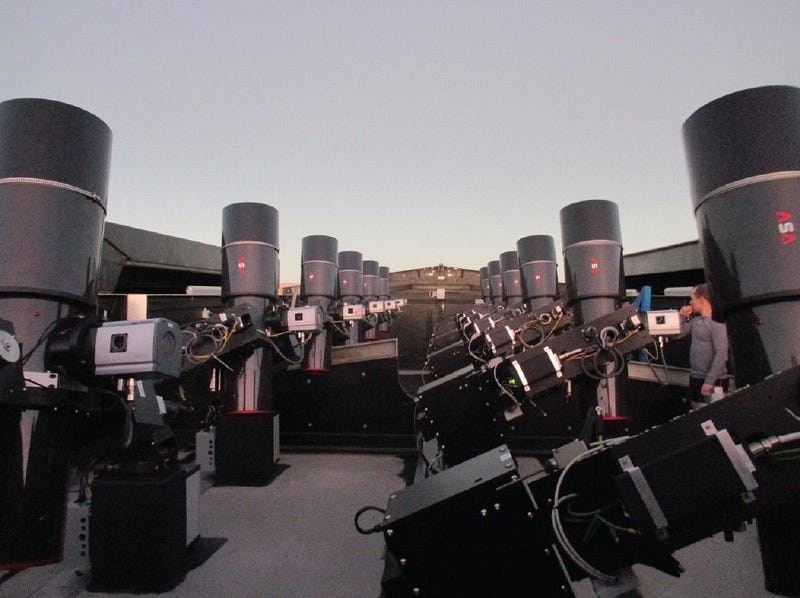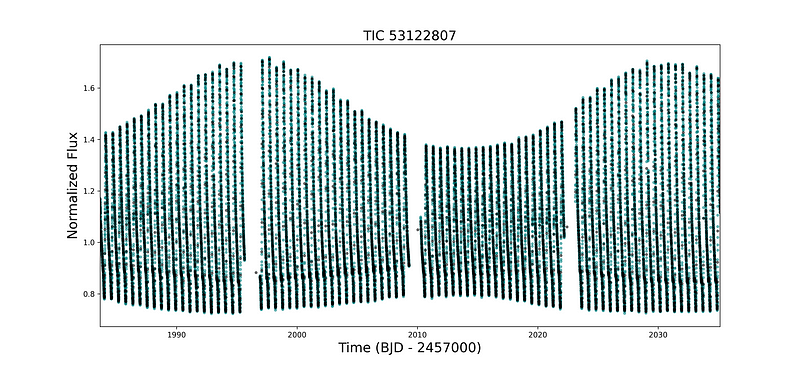Unlocking the Secrets of Exoplanets: Join the Hunt from Home
Written on
Chapter 1: The Call to Citizen Scientists
If you've ever dreamed of aiding in the discovery of exoplanets, now is your opportunity. An innovative research initiative is inviting individuals to assist in identifying exoplanets through straightforward visual pattern recognition. The best part? You don’t need a telescope to get involved.
This initiative collaborates with the Next-Generation Transit Survey (NGTS), a sophisticated network of telescopes dedicated to planet hunting. Whether you're an experienced amateur astronomer equipped with a large Dobsonian telescope or someone entirely new to this field, your participation is welcomed.
The primary task involves detecting the decrease in a star's brightness when a planet passes in front of it. Participants will compare images to identify the distinct shape of a star’s "light curve" over time. When a recognizable pattern appears, it is flagged for further study.
The stars with transiting planets are quite rare, as their orbits must align perfectly edge-on from our viewpoint. As a planet transits, factors such as its speed, shape, and orbital eccentricity influence the degree of light occlusion from its parent star. In essence, these transits resemble eclipses, though the dimming of a star is considerably smaller due to the vastness of stars.
Currently, the transit method stands as our most effective technique for discovering planets beyond our solar system. It's worth noting that NGTS is not alone; TESS also employs a similar method for hunting transiting planets, akin to Kepler's approach.

The NGTS consists of twelve 20cm telescopes, a size that is commercially available for purchase. Ideally, planets should orbit their stars with regularity, but various factors can affect a star's brightness as observed from our telescopes.
Additionally, sunspots present a challenge. Our sun experiences cycles of fluctuating sunspot activity, which can skew the data collected by observers. This phenomenon has been observed in other stars as well, such as the unusual dimming and subsequent brightening of Betelgeuse from October 2019 to February 2020, attributed to a significant gas expulsion.

Another complication arises from our atmosphere. Like other terrestrial telescopes, NGTS must contend with atmospheric turbulence, which causes stars to twinkle. This is why the NGTS array is strategically located at the ESO’s Paranal Observatory in the Chilean Andes, a location renowned for its dry climate and high altitude—almost as close to space as possible without launching the entire observatory into orbit.
NGTS operates at a lower imaging frequency compared to TESS or Kepler and experiences intermittent downtime. This is crucial because participants must determine two things: whether a dip in brightness resembles a U, V, or flat bottom shape, and if a sequence of dips is consistent enough to indicate an orbital transit. Limited data points can complicate trend analysis, and if the image capture and transit intervals are misaligned, it may result in missed transits—an area where human observation still excels over machines.
What is your favorite citizen science project? Have you participated in SETI or Folding@home? Are you currently involved in the NGTS initiative? Share your experiences in the comments!
Chapter 2: Engaging in Exoplanet Discovery
The first video, "How to help NASA with GLOBE Observer. Become a citizen scientist!" provides insights into how you can contribute to scientific research from home.
The second video, "Explore Exoplanets: The Discoverers; Ep. 1 Charles Beichman (part 1)," delves into the journey of exoplanet discovery and the pioneers behind it.